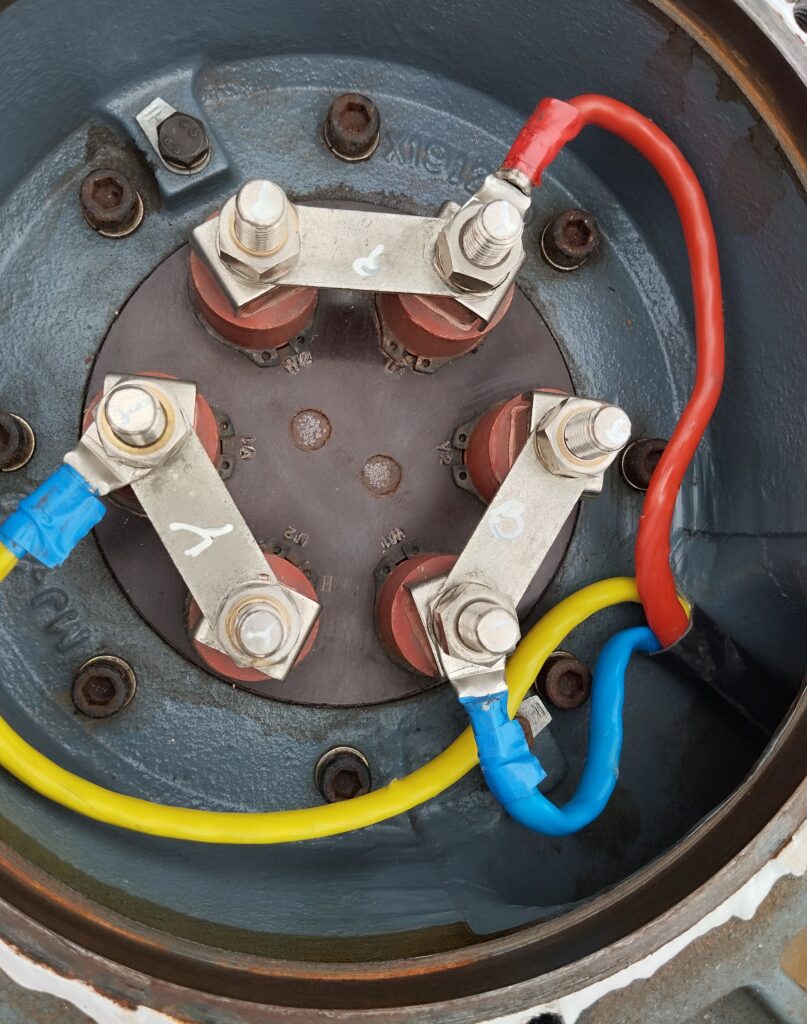Electric Motor maintenance checklist | Things to do during Motor maintenance
Electric motor maintenance checklist

An electric motor maintenance checklist is very important. Maintaining three-phase electric motors is crucial to ensure their longevity and optimal performance. Before proceeding with any maintenance, disconnect the power to the motor and make sure to lock out/tag out the electrical circuit to ensure safety.
Here’s a checklist of things to do during maintenance of three-phase motors:
-
Visual Inspection:
- Start by conducting a thorough visual inspection of the motor. Look for any visible signs of damage or wear, such as loose connections, rust, or oil leaks.
-
Check Motor Temperature:
- This can be done with a temperature gun. Measure the motor’s operating temperature using an appropriate tool. Ensure it does not exceed the manufacturer’s specified limits.
-
Check Electrical Connections:
- Inspect the terminal connections for tightness and signs of overheating. If any connections are loose, tighten them, and replace damaged wires.
-
Lubrication:
- If the motor has lubrication points, follow the manufacturer’s guidelines to check and replenish lubricant as needed. NOTE: Use only manufacturers recommended lubricant.
-
Bearing Inspection:
- Examine the motor’s bearings for wear and noise. Lubricate or replace bearings as necessary.
-
Alignment:
- Ensure that the motor is correctly aligned with the connected equipment. Misalignment can lead to premature wear and decreased efficiency.
-
Cooling System:
- Check the Non-Drive end (NDE) and clean the motor’s cooling system, including fans or cooling fins, to prevent overheating.
-
Inspect Ventilation:
- Verify that the motor has proper ventilation and is not obstructed by debris or other equipment.
-
Vibration Analysis:
- Utilize a vibration analysis tool to detect any abnormal vibrations, which can indicate issues with the motor or its mounting.
-
Inspect Insulation:
- Examine the motor’s insulation for cracks, damage, or signs of deterioration. Replace or repair insulation as needed.
-
Cable and Conduit Inspection:
- Inspect the motor’s cables and conduits for wear, damage, or signs of deterioration. Replace any damaged components.
-
Control Panel Inspection:
- Inspect the motor control panel for any loose or damaged components, including contactors, relays, and overload protection devices.
-
Test Motor Windings:
- Use a megohmmeter to test the insulation resistance of the motor windings. Low insulation resistance can indicate a potential issue.
check: Testing the IR value of a three-phase motor
-
Motor Efficiency Testing:
- Conduct efficiency tests to ensure the motor is operating at its rated efficiency.
-
Record Keeping:
- Maintain a detailed maintenance log to track all maintenance activities. Include dates, findings, and actions taken.
-
Documentation and Manuals:
- Always keep the motor’s documentation and manuals handy for reference during maintenance and troubleshooting.
[…] Also: Motor Maintenance checklist & Motor Maintenance […]